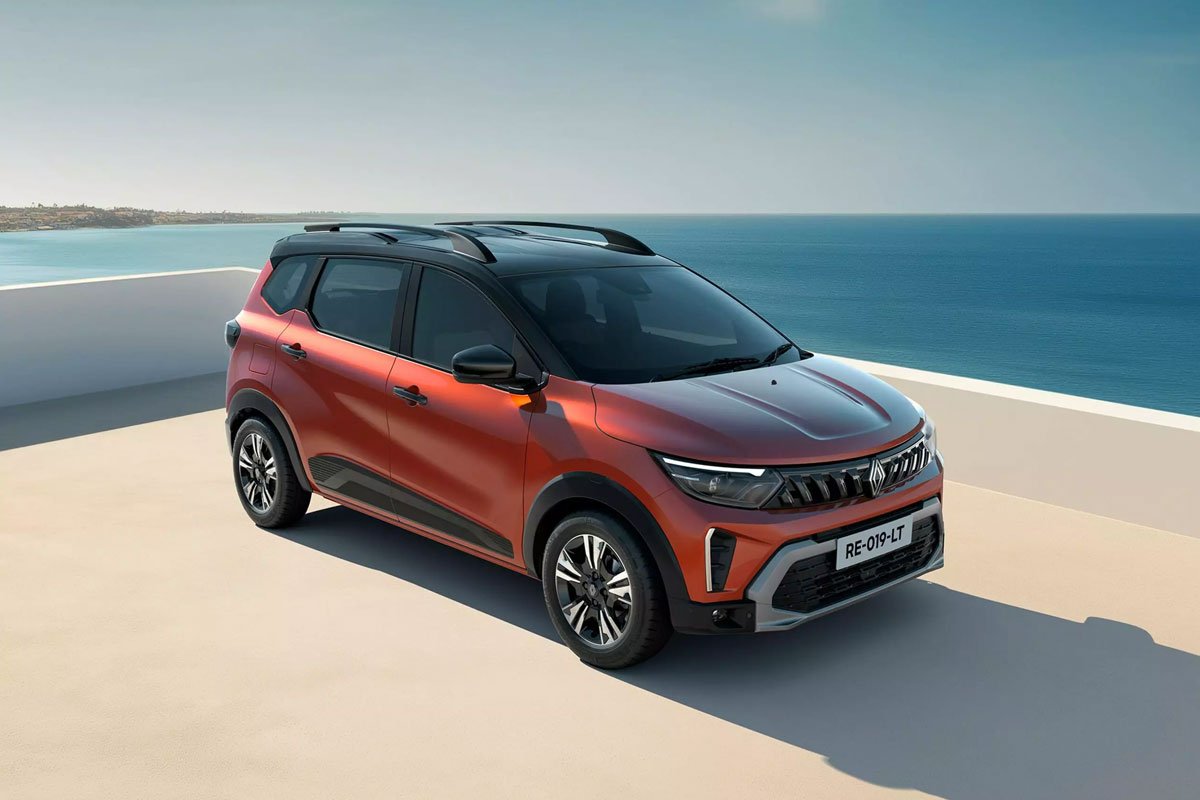Renault’s Triber has been a strong contender in India’s sub-4-metre, budget 7-seater MPV segment since its launch. In 2025, Renault has given a facelift to the triber, not just style tweaks, but significant updates in features and safety, while retaining its core strengths. This article examines what’s new, how it performs, what buyers should know, and how it stacks up in its segment.
Exterior & Styling Changes
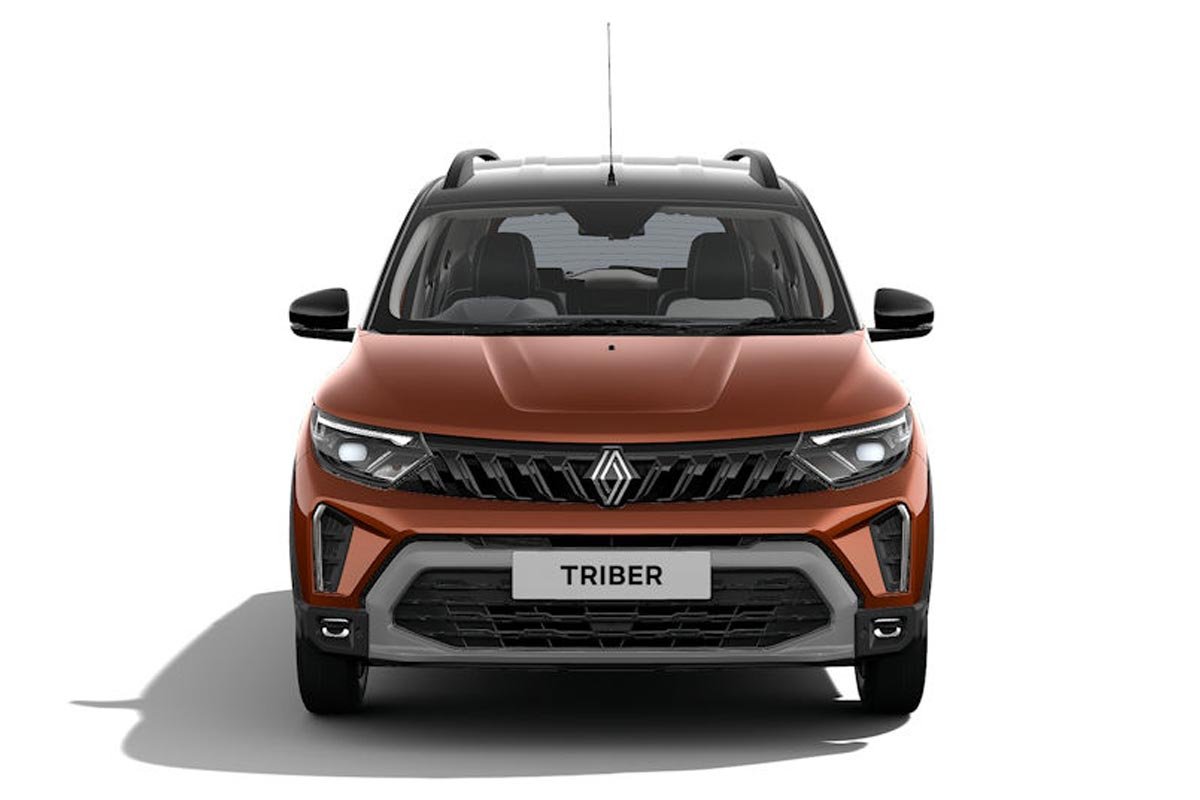
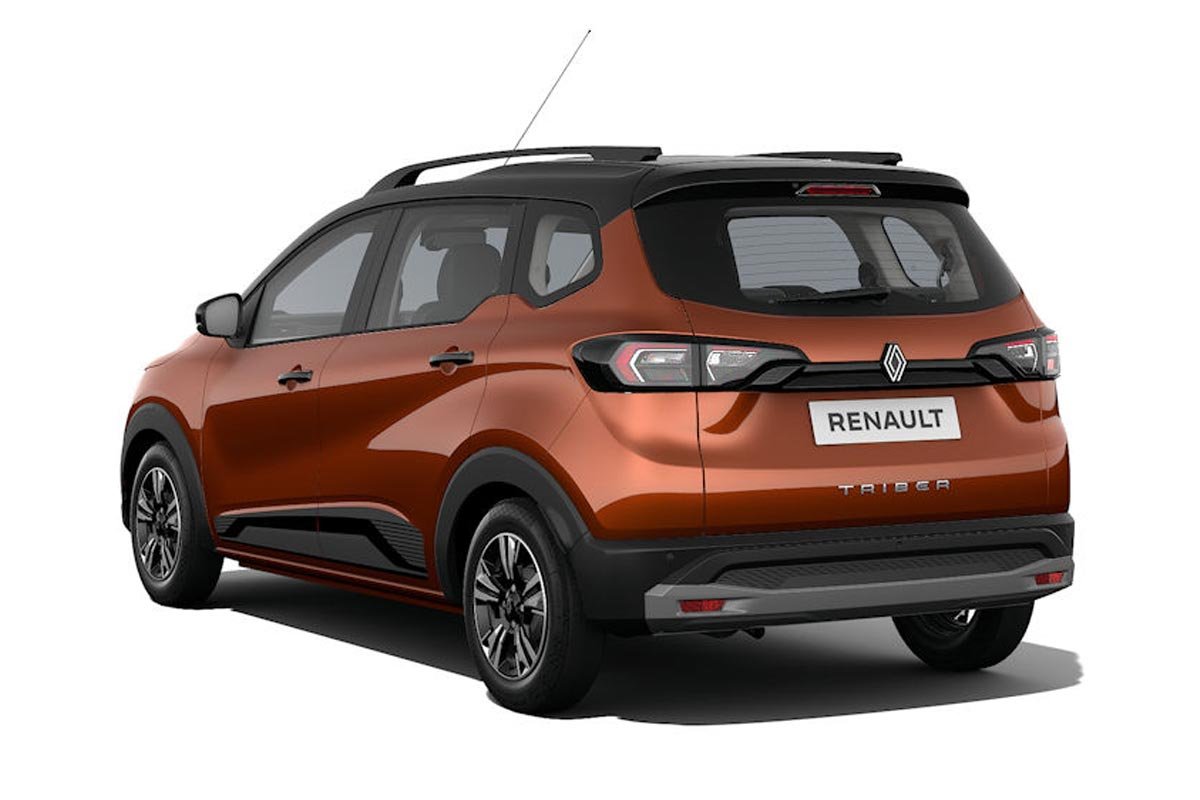
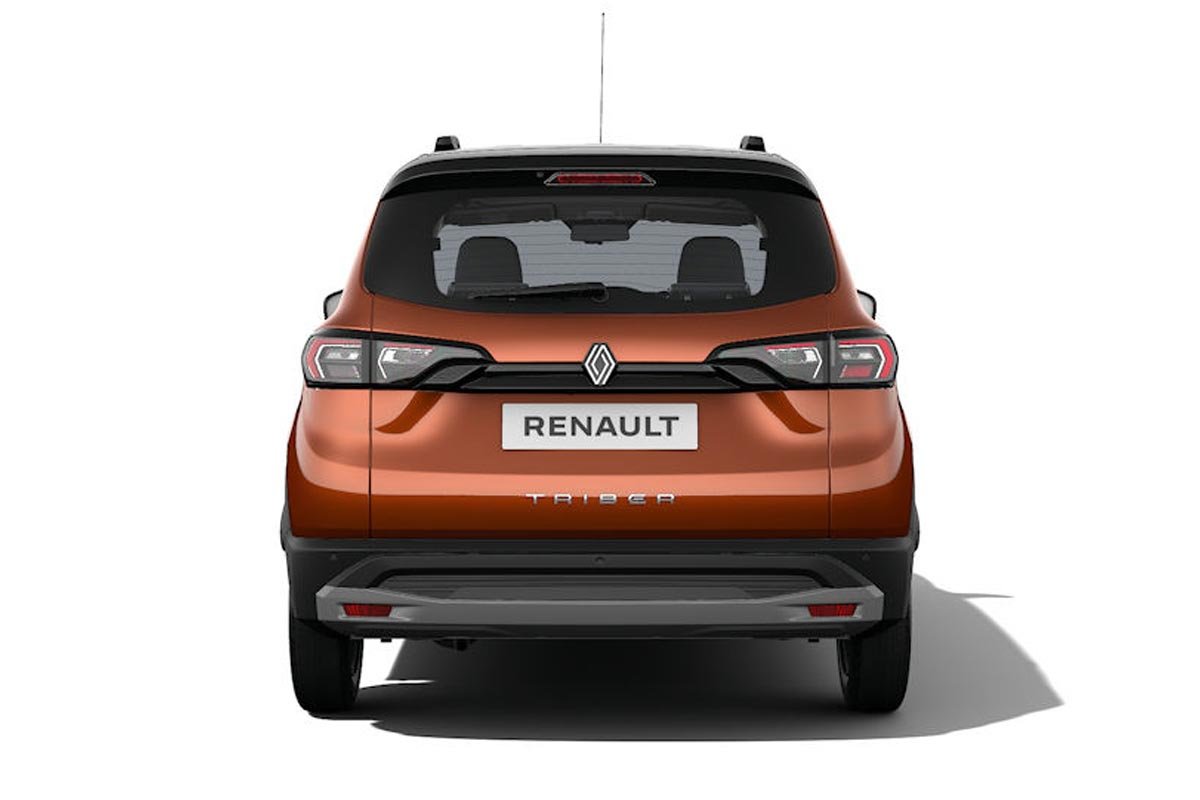
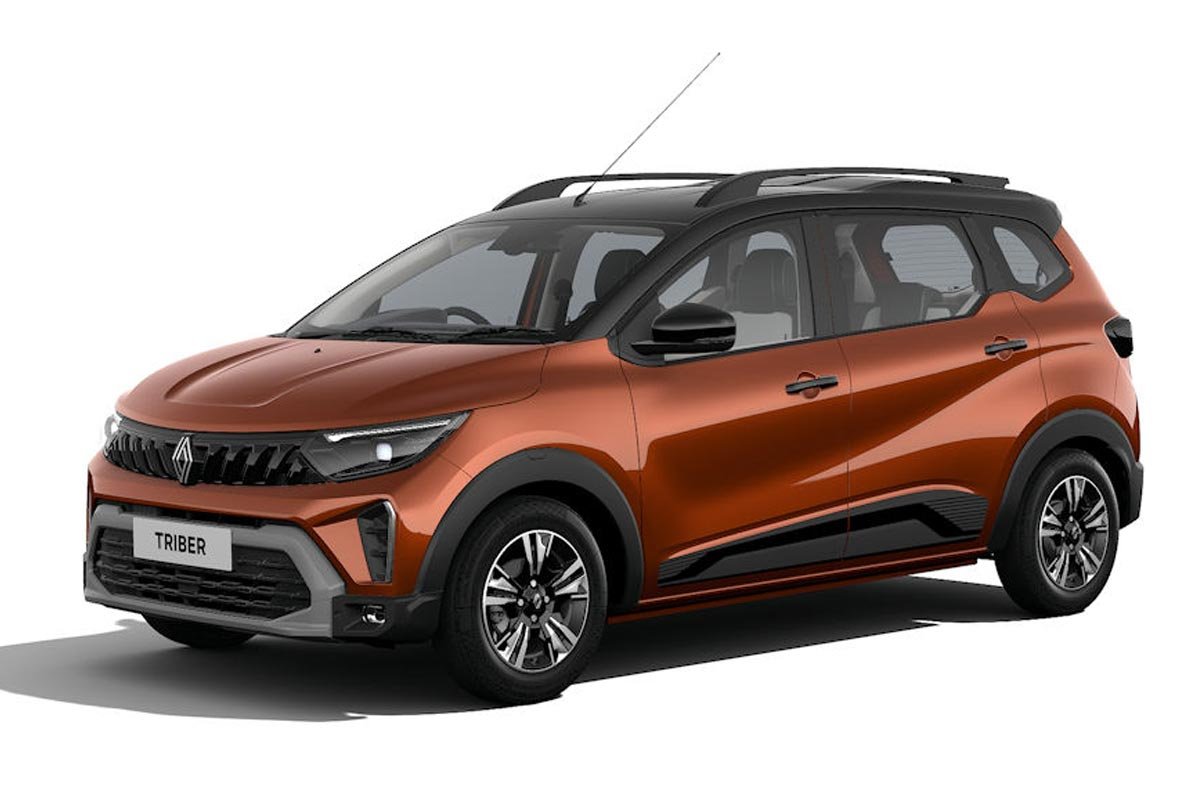
- Front fascia: New gloss-black grille with vertical slats replacing the older horizontal design. The new grille is sharper, more assertive. LED projector headlamps with LED DRLs, revised bumper with a larger air dam and repositioned fog lamps.
- Rear styling: Smoked LED tail lamps connected via a gloss-black strip; ‘TRIBER’ badging across the tailgate; rear bumper revised.
- Other touches: Gloss-black door handles (instead of chrome), stylised 15-inch dual-tone wheel covers/steel wheels, some variants with an all-black roof and new skid-plate trims.
- Colours: Three new colour options added, Amber Terracotta, Shadow Grey, Zanskar Blue. These help give more personalisation.
These changes give it a more premium, modern look, minimising the gap between what budget MPVs offer and more expensive rivals in terms of perceived styling.
Interior & Feature Enhancements
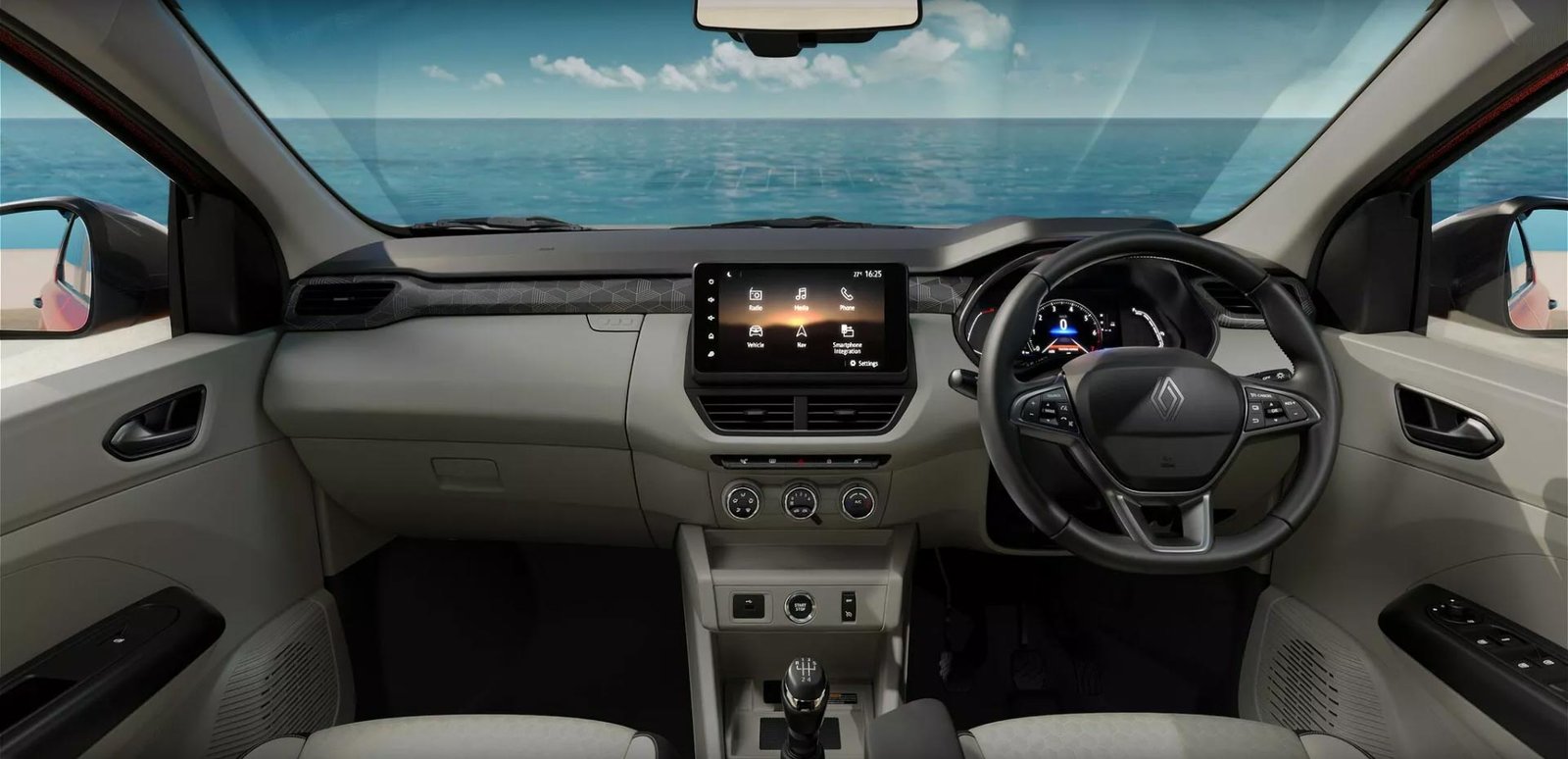
Cabin & Comfort
- The dashboard now has a dual-tone black and beige theme (or grey-and-beige in some reports), replacing older black/silver layouts.
- The infotainment screen is an 8-inch touchscreen with wireless Android Auto & Apple CarPlay. It’s repositioned higher, inspired by Renault’s Kiger. AC vents are placed below.
- A new 7-inch semi-digital or digital driver’s display (depending on variant) for the instrument cluster.
- Enhanced seat upholstery and geometric patterns on trims; more ambient lighting in some variants.
Convenience, Safety & Utility
- Safety: Six airbags are standard across all variants now. Other safety tools include ABS with EBD, ESC, traction control, hill-start assist, tyre pressure monitoring system (TPMS), and ISOFIX child seat anchors.
- Added features: Front parking sensors; rear parking camera; rain-sensing wipers; auto headlights; cruise control; auto-fold ORVMs. Touches that customers often want but are rarely standard in budget cars.
- Space & flexibility: The “rethink space” philosophy continues. The third-row seats are modular: can fold, tumble, or be removed to make it into a 5- or 6-seater, depending on needs. Boot space expands when rear seats are folded/removed. Interior storage volume is decent.
Powertrain & Mechanical Aspects
Here, the facelift holds back, there are no major mechanical or engine performance upgrades.
- Engine: The same 1.0-litre, 3-cylinder naturally aspirated petrol engine, producing approximately 72 PS and 96 Nm torque.
- Transmission: 5-speed manual across most variants; a 5-speed AMT (automated manual) is available, but only in the top-Emotion variant.
- CNG option: Dealers can fit approved CNG retrofit kits. However, the engine/driveline itself is unchanged.
- Definitely, it still misses out on the 1.0 L turbo petrol engine that the Kiger gets.
So performance is expected to be similar to outgoing Triber: good for city driving, modest for highway or fully loaded (7-people + luggage) uphill or steep gradients.
Variants, Pricing & Value Proposition
| Variant | Transmission / Notes | Ex-Showroom Price (India) |
|---|---|---|
| Authentic | Manual petrol | ₹ 5.76 lakh |
| Evolution | Manual petrol | ₹ 6.63 lakh |
| Techno | Manual petrol | ₹ 7.32 lakh |
| Emotion | Manual petrol / AMT (top) | ₹ 7.91 lakh (manual), ₹ 8.39 lakh (AMT) |
Buyers now get many more standard safety and convenience features, which strengthen Triber’s value proposition.
Strengths (Experience-Based Insights)
- Space & Versatility: Even though the third row is compact, the ability to remove/fold it gives flexibility. Great for families who alternate between carrying people and luggage.
- Mileage / Economy: With the small NA engine, fuel consumption is reasonable in city traffic; efficient on highways. Users expect good real-world numbers given the engine size and weight.
- Safety Improvements: Moving to 6 airbags standard, adding ESC, TPMS, etc., helps address a major area of concern for budget MPV buyers.
- Feature-rich for price: Features like rain-sensing wipers, auto headlights, wireless smartphone connectivity, and front parking sensors are not always standard in rivals. Gives a “premium feel” despite modest underpinnings.
Weaknesses & Trade-offs (Honest Observations)
- Power is limited: With 72 PS / 96 Nm, performance will suffer under full load (7 persons + luggage), or on steep inclines. Acceleration won’t be brisk; high revs needed.
- AMT Lag: The AMT in Emotion is likely smoother than early AMTs, but still will have lag and less responsiveness compared to manual or full automatics.
- Material Quality: Though interior trim, upholstery, and ambience have improved, some plastics are still hard-touch and budget-oriented. Rivals may offer slightly more premium materials.
- No major engine/chassis upgrades: No bigger engine, no higher power option; no major suspension upgrades reported. For buyers seeking performance, this remains a limitation.
- Boot space with 3 rows: When all seats are occupied, luggage room is limited to 84L, a typical issue for small 7-seaters. Trade-off between seating capacity and practicality for travel.
How It Compares
To provide perspective, some rivals and how Triber stands:
| Competitor | What they offer / strength | Triber advantage/disadvantage |
|---|---|---|
| Maruti Suzuki Ertiga / XL6 | More spacious cabins, better performance options, and brand resale strength. | Triber is cheaper in base variants, has better standard safety features, and more flexible seating. |
| Kia Carens | More premium segment; more powerful engine options; more tech. | Triber wins on price/value; fewer bells & whistles but less cost. |
| Other budget MPVs / micro-SUVs | Often lacks 7-seater flexibility, fewer safety features standard. | Triber is strong in offering safety + 7 seats under ₹10 lakh. |
Best Use Cases
- Urban / semi-urban families needing a cheap 7-seater for city, school runs, weekend trips.
- Buyers who value features & safety but are okay with modest power.
- Those who will sometimes carry luggage instead of always needing all 7 seats.
- People who value fuel economy and low running costs over outright performance.
Frequently Asked Questions (FAQs)
1. What is the price of the 2025 Renault Triber in India?
The 2025 Renault Triber starts at ₹5.76 lakh (ex-showroom) for the base “Authentic” variant and goes up to ₹8.39 lakh for the top “Emotion AMT” variant.
2. Does the new Triber have a turbo engine option?
No, the 2025 facelift continues with the same 1.0L naturally aspirated petrol engine (72 PS, 96 Nm). A turbo or CNG variant may arrive later, depending on market demand.
3. How many airbags does the new Triber have?
The facelifted Triber offers 6 airbags as standard across all variants, a major safety improvement.
4. What is the mileage of the Renault Triber facelift?
The claimed mileage is around 20 km/l (manual) and 17 km/l (AMT). Real-world figures may vary based on load and driving conditions.
5. What are the major new features in the 2025 Renault Triber?
Key new features include:
- 8-inch touchscreen with wireless Android Auto & Apple CarPlay
- 7-inch digital driver display
- 6 airbags standard
- Cruise control
- Auto headlamps and rain-sensing wipers
- Front parking sensors
- Dual-tone interior
6. Is the Renault Triber good for long drives?
Yes, it’s comfortable for occasional long trips with 5–6 occupants. However, with 7 passengers and luggage, performance may feel limited, especially on highways or inclines.
7. How many people can fit in the Renault Triber?
It is a 7-seater MPV with modular seating, meaning you can configure it as a 5-, 6-, or 7-seater as per need.
8. Does the Triber facelift have an automatic transmission?
Yes, the AMT (Automated Manual Transmission) is available in the top Emotion variant.
9. What are the colour options in the new Renault Triber?
The 2025 facelift introduces new shades: Amber Terracotta, Shadow Grey, and Zanskar Blue, along with existing colours like Moonlight Silver, Electric Blue, and Ice Cool White.
10. Should you buy the 2025 Renault Triber facelift?
If you want a safe, flexible, feature-packed 7-seater under ₹10 lakh, yes.
If performance or premium interior feel are your top priorities, you might consider higher-end rivals like the Ertiga or Carens.
Verdict
The 2025 Renault Triber facelift is a well-calibrated upgrade. Renault has wisely focused on what matters for the typical buyer in this segment: styling, comfort, features, safety, all while keeping price competitive. The lack of performance increase is a conscious trade-off, not unexpected for this class.
If you’re buying a family car under ₹10 lakh and want 7-seater flexibility plus modern safety & convenience, the new Triber should be high on your shortlist. But if you need strong performance, frequent highway runs or steep hill climbs, you might want to look at slightly more powerful alternatives, albeit at a higher cost.
Conclusion
The 2025 Renault Triber facelift is an intelligently upgraded MPV that balances cost, features, and safety. It doesn’t revolutionise performance, but for many Indian buyers, that isn’t the priority. The facelift strengthens Triber’s position in its market segment as a smart value pick. For what’s offered vs what’s paid, it delivers well.

